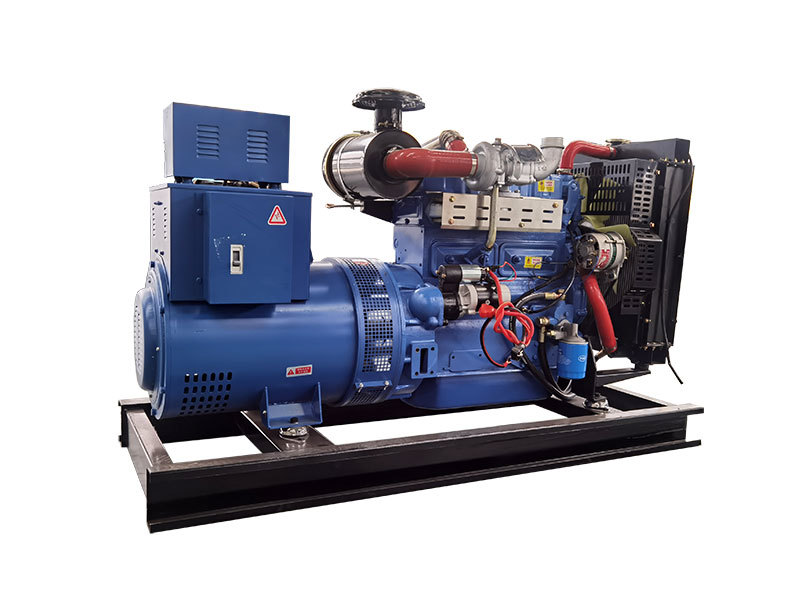
A generator can be a lifesaver during power outages, but what happens when your backup power source fails? Knowing how to troubleshoot a generator set is crucial for ensuring reliable power when you need it most. This guide will walk you through common generator problems and provide practical solutions to get your generator back up and running.
Common Generator Starting Problems
One of the most frustrating issues is a generator that refuses to start. Before you panic, there are several simple checks you can perform. First, ensure the fuel tank is full and the fuel valve is open. Seems obvious, right? You'd be surprised how often this is the culprit. Next, check the spark plug. A fouled or worn spark plug can prevent the engine from igniting. Remove the spark plug, inspect it for damage or excessive carbon buildup, and clean or replace it as needed. If the spark plug looks good, inspect the air filter. A clogged air filter restricts airflow to the engine, hindering combustion. Clean or replace the air filter according to the manufacturer's recommendations. Finally, check the engine oil level. Low oil can trigger a safety shutdown, preventing the generator from starting.
Addressing Generator Power Output Issues
Sometimes a generator starts but struggles to deliver consistent power. This could manifest as flickering lights or appliances failing to operate correctly. One potential cause is an overloaded generator. Calculate the total wattage of the devices you're connecting to the generator and ensure it's within the generator's rated capacity. Overloading can damage the generator and shorten its lifespan. Another possibility is a faulty voltage regulator. The voltage regulator maintains a stable output voltage. If it's malfunctioning, the generator's output may fluctuate. Testing the voltage regulator requires specialized equipment, so it's best to consult a qualified technician if you suspect this is the issue.
Troubleshooting Generator Engine Problems
Beyond starting and power output, various engine-related problems can plague a generator. Overheating is a common issue, often caused by insufficient ventilation or a blocked cooling system. Ensure the generator is placed in a well-ventilated area and that the cooling fins are free of debris. Regularly check and change the engine oil as specified in the owner's manual to maintain proper lubrication and cooling. Unusual noises, like knocking or grinding, can indicate internal engine damage. These issues require professional attention, so it's best to contact a qualified mechanic for diagnosis and repair.
Electrical System Troubleshooting for Generators
The generator's electrical system can also be a source of trouble. Loose or corroded connections can interrupt the flow of electricity. Inspect all wiring connections and clean or tighten them as needed. A faulty circuit breaker can also cause problems. Test the circuit breaker using a multimeter to ensure it's functioning correctly. If you're unsure how to perform these checks, consulting an electrician is recommended.
Regular Maintenance for Preventing Generator Problems
Preventive maintenance is key to avoiding generator troubles. Establish a regular maintenance schedule that includes oil changes, air filter cleaning, and spark plug replacement at the intervals recommended by the manufacturer. Periodically run the generator under load to ensure it's functioning correctly and to exercise the engine. How often do you test your generator? This proactive approach can prevent many common problems and extend the life of your generator.
Generator Troubleshooting Tools and Resources
Having the right tools on hand can make troubleshooting much easier. A multimeter is essential for testing electrical components like the voltage regulator and circuit breaker. A spark plug wrench is needed for removing and inspecting the spark plug. The owner's manual is an invaluable resource for troubleshooting specific to your generator model. It contains detailed diagrams, specifications, and troubleshooting tips.
When to Call a Professional for Generator Repair
While many generator problems can be resolved with basic troubleshooting, some issues require professional expertise. If you're uncomfortable working with electrical or mechanical components, or if you've tried the steps outlined here and the problem persists, it's best to call a qualified technician. Attempting complex repairs without the necessary knowledge and experience can worsen the problem and even be dangerous.
Understanding Generator Error Codes
Many modern generators display error codes that can pinpoint the source of a problem. Refer to the owner's manual to decipher the meaning of any displayed codes. This can significantly narrow down the troubleshooting process and help you identify the faulty component.
Troubleshooting Portable Generator Problems vs. Standby Generator Issues
While the basic troubleshooting principles are similar, there are some key differences between troubleshooting portable generators and standby generators. Standby generators are permanently installed and often integrated with the home's electrical system, making troubleshooting more complex. For standby generator issues, it’s always recommended to consult a qualified electrician or generator technician. Portable generator problems are often simpler to diagnose and fix, as they are typically self-contained units.
Next Steps for Effective Generator Troubleshooting
By following these steps, you can effectively troubleshoot a generator set and keep it running smoothly. Remember, regular maintenance is the best way to prevent problems in the first place. Keep your generator in good working order and you’ll have reliable power when you need it most. If you're still experiencing issues after attempting these troubleshooting steps, don’t hesitate to contact a qualified professional for assistance. They have the expertise and equipment to diagnose and repair more complex problems.






